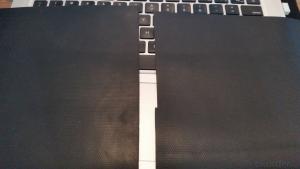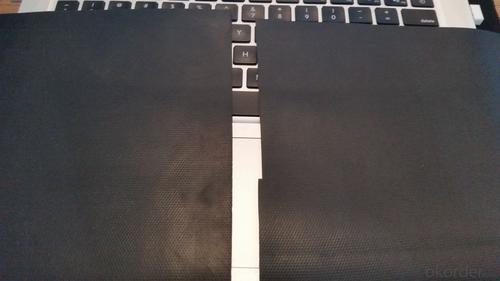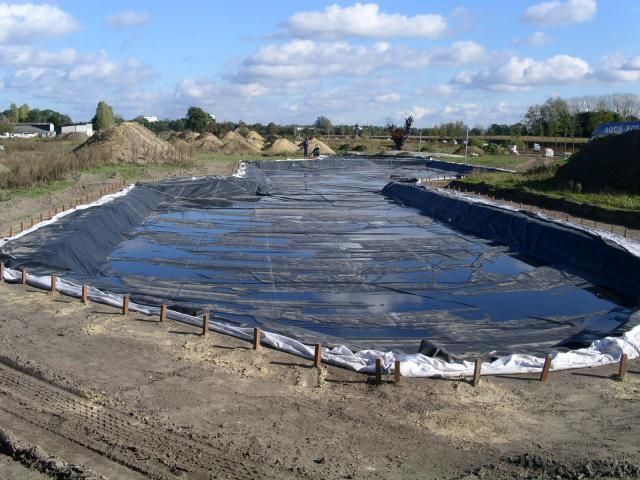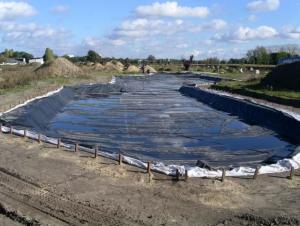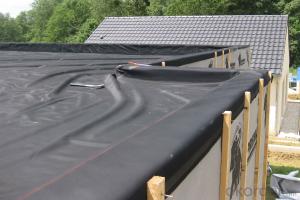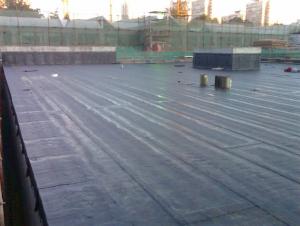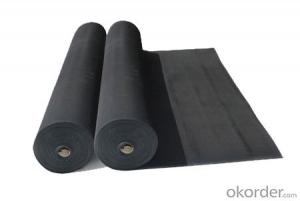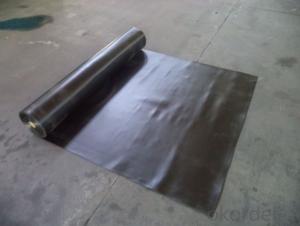EPDM Reinforced Waterproof Membrane with 1.0mm Thickness
- Loading Port:
- Shanghai
- Payment Terms:
- TT OR LC
- Min Order Qty:
- 50000 m²
- Supply Capability:
- 5000000 m²/month
OKorder Service Pledge
OKorder Financial Service
You Might Also Like
EPDM Reinforced Waterproof Membrane with 1.0mm Thickness
Description Of EPDM Reinforced Waterproof Membrane with 1.0mm Thickness:
1. Excellent physical and mechanical performance, high tearing resistance;good deformation adaptability, high puncture resistance;
2. High aging resistance, high UV resistance, anti-acid & alkali;
3. Excellent low & high temperature resistance, innocuous, long life span;
4. Perfect water proof performance, seepage and humidity resistance.
Main Features of EPDM Reinforced Waterproof Membrane with 1.0mm Thickness:
A.Polyester based SBS Modified Bitumen Waterproofing Membrane
a. Strong impermeability
b. High tensile strength, elongation, ability to adapt the grassroots shrinkage deformation and cracking
c. Puncture-resistant, broken resistant, tear-resistant
d. The corrosion resistance, resistance to mildew, weathering good
e. Construction convenient, hot-melt can be operated Four Seasons Construction, reliable joints
B. Fiberglass based SBS Modified Bitumen Waterproofing Membrane
a. High tensile strength, stability of a good size
b. High Temperature good performance
c. Damage resistance, corrosion resistance, resistance to mildew, weathering good performance
d. Good construction performance, reliable joints.
Specifications of EPDM Reinforced Waterproof Membrane with 1.0mm Thickness:
| Material | EPDM Rubber |
| Size | 1.2m (width)*20m (length) or customized, weldable type 2.05m or 4m width |
| Thick | 1.2mm, 1.5mm, 2.0mm |
| Type | Vulcanized & Weldable |
| Pattern | Non-reinforced (homogeneous) |
| Certificate | ISO9001/14001 |
Applications of EPDM Reinforced Waterproof Membrane with 1.0mm Thickness:
geomembrane used in groundsill of road, highway, railway and waterproof layer of swelling clay and wet collapsed loess.Geomembrane can be widely used in areas of garbage burying, waste disposal and underground construction projects.such as below:
- aquaculture ponds
- Ouchi root barrier membrane
- Floating baffles;
- Process wastewater
- Stormwater impoundments;
- Secondary containment;
- Spill containment
- Manure and biogas tanks and covers
- Potable water tanks and covers;
- Sludge Drying beds;
- Bioremediation covers & liners;
- Leachate ponds
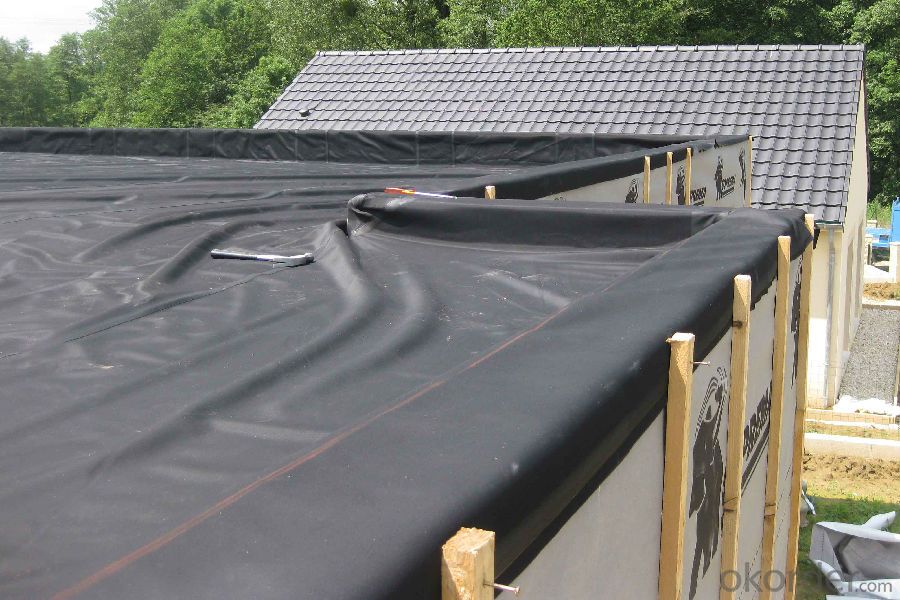


IMages of EPDM Reinforced Waterproof Membrane with 1.0mm Thickness:
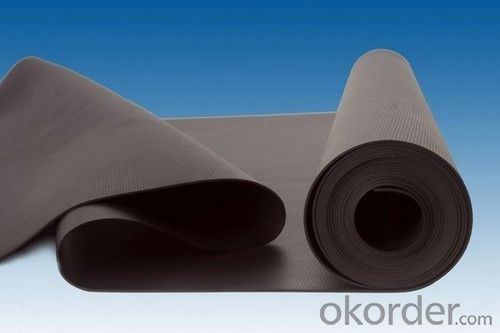



FAQ of EPDM Reinforced Waterproof Membrane with 1.0mm Thickness:
1. What are we supplying?
We are specialized in producing Colorful Asphalt Roof Shingle, SBS/APP modified bitumen waterproof membrane, Self adhesive bitumen waterproof membrane, PVC waterproofing membrane, EPDM rubber roofing membrane, Single Component Polyurethane Waterproof Coating, and Spray Polyurea Waterproof Coating
.
2. How Many years experience do we have?
We have been exported to more than 20 countries in the past 15 years.
3. How long do we usually reply your request?
We always reply our customer within 24 hours.
- Q: Is a waterproofing membrane resistant to mold and mildew growth?
- Indeed, the resistance of a waterproofing membrane to the growth of mold and mildew stems from its specific design, which aims to establish a barrier against moisture infiltration. This impedes water seepage and the subsequent development of mold and mildew. Through the effective sealing of the area, these membranes eradicate the favorable conditions for the proliferation of mold and mildew, such as dampness and moisture. However, it is important to acknowledge that although the membrane itself exhibits resistance to mold and mildew growth, it does not guarantee absolute protection against these issues. Proper installation, regular maintenance, and ensuring adequate ventilation play pivotal roles in preventing the long-term growth of mold and mildew.
- Q: Can a waterproofing membrane be used for a shower pan?
- Yes, a waterproofing membrane can be used for a shower pan. It helps to prevent water leakage and protect the underlying structure from moisture damage.
- Q: Can waterproofing membranes be used on green roofs?
- Indeed, green roofs can utilize waterproofing membranes. They serve as an indispensable element within green roof systems. The concept of green roofs involves a layer of plants and growing medium situated atop a waterproofing layer. It is this waterproofing layer that safeguards the building structure by preventing water infiltration and subsequent damage. The waterproofing membranes employed in green roof applications are specifically engineered to withstand the unique challenges posed by such installations, including exposure to water, UV radiation, and root penetration. These membranes are typically composed of durable materials such as PVC, TPO, or EPDM, renowned for their exceptional waterproofing capabilities. Moreover, certain waterproofing membranes used on green roofs may possess additional attributes like root resistance and UV stability, thereby ensuring the roof's longevity and imperviousness. Ultimately, the utilization of waterproofing membranes on green roofs plays a vital role in establishing a sustainable and enduring roofing system that not only provides water protection but also offers environmental advantages.
- Q: How long does a waterproofing membrane last?
- The lifespan of a waterproofing membrane can vary depending on several factors. Generally, a well-installed and properly maintained waterproofing membrane can last between 10 to 20 years. However, this estimate can be influenced by various factors such as the quality of the membrane material, the level of exposure to environmental elements, the frequency of foot traffic or other stressors, and the overall maintenance and care provided. It is important to note that regular inspections and maintenance are crucial for prolonging the lifespan of a waterproofing membrane. Additionally, following manufacturer guidelines and recommendations can ensure optimal performance and increase the longevity of the membrane.
- Q: Does a waterproofing membrane require any specialized tools or equipment for installation?
- Specialized tools and equipment are typically necessary for the installation of a waterproofing membrane. To properly install the membrane, one must utilize various common tools and equipment. These include a trowel or roller for spreading the membrane, a utility knife for cutting and shaping the membrane, a heat gun or propane torch for activating and adhering the membrane, a seam roller for ensuring proper bonding of seams, and a caulking gun for applying sealant around penetrations and edges. Depending on the specific type of waterproofing membrane being installed, additional tools such as a primer, bonding adhesive, or specialized membrane fasteners may also be required. It is crucial to refer to the manufacturer's installation guidelines to guarantee the correct tools and equipment are utilized for a successful installation.
- Q: Can a waterproofing membrane be used for a foundation wall damp proofing?
- Yes, a waterproofing membrane can be used for foundation wall damp proofing. A waterproofing membrane is designed to prevent the passage of water and can be used to create a barrier between the foundation wall and the surrounding soil. This barrier can help to prevent moisture from seeping into the foundation wall, which can lead to dampness and potential water damage. By applying a waterproofing membrane to the foundation wall, it can effectively damp proof the wall and protect it from water intrusion. However, it is important to ensure that the waterproofing membrane is installed correctly and that all joints and seams are properly sealed to provide a continuous barrier against water.
- Q: Can a waterproofing membrane be used for elevator pits and machine rooms?
- Yes, a waterproofing membrane can be used for elevator pits and machine rooms. Waterproofing membranes are commonly used in these areas to protect the structure from water damage and prevent leaks. They provide a barrier against water intrusion, ensuring the elevator pit and machine room remain dry and free from moisture-related issues.
- Q: Is the waterproofing membrane an insulating material?
- There are many varieties of coil, the vast majority of the coil itself is insulated, mainly refers to the rubber, resin, asphalt. But the following are non-insulated: 1, PSS metal waterproofing membrane, which is the only coil in the whole metal coil, but the strict sense should not be included in the waterproofing membrane;
- Q: Can a waterproofing membrane be used for zoos or aquariums?
- Zoos or aquariums can definitely utilize waterproofing membranes. These membranes are specifically designed to create a protective barrier against water infiltration, making them an excellent choice for preventing water damage and leakage in such environments. They can be applied to different surfaces, such as concrete or steel, to establish a watertight seal and prevent water from seeping into the structure or habitat. Aquariums often rely on waterproofing membranes to ensure that their tanks remain completely watertight and free from leaks, as this is crucial for the well-being of the aquatic animals. Similarly, in zoos, waterproofing membranes can be applied to animal enclosures or exhibit areas to safeguard the structures from water damage and uphold a safe and healthy environment for the animals. Moreover, these membranes possess resistance against various chemicals and can withstand harsh conditions, making them an excellent safeguard against potential chemical spills. All in all, waterproofing membranes are a highly suitable option for zoos or aquariums, as they offer an effective solution for preserving the integrity of the structures and habitats, averting water damage, and ensuring the safety and well-being of the animals.
- Q: Can a waterproofing membrane be used on tunnels with security systems?
- Yes, a waterproofing membrane can be used on tunnels with security systems. The waterproofing membrane is designed to protect the tunnel structure from water infiltration and damage, and it can be installed without interfering with the security systems in place.
Send your message to us
EPDM Reinforced Waterproof Membrane with 1.0mm Thickness
- Loading Port:
- Shanghai
- Payment Terms:
- TT OR LC
- Min Order Qty:
- 50000 m²
- Supply Capability:
- 5000000 m²/month
OKorder Service Pledge
OKorder Financial Service
Similar products
Hot products
Hot Searches
Related keywords
